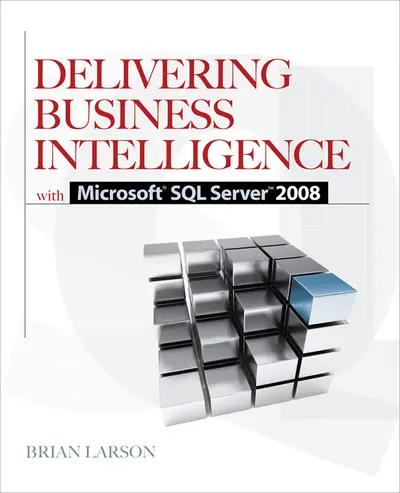My Account Details

ISBN10: 0071549447 | ISBN13: 9780071549448

Step 1 . Download Adobe Digital Editions to your PC or Mac desktop/laptop.
Step 2. Register and authorize your Adobe ID (optional). To access your eBook on multiple devices, first create an Adobe ID at account.adobe.com. Then, open Adobe Digital Editions, go to the Help menu, and select "Authorize Computer" to link your Adobe ID.
Step 3. Open Your eBook. Use Adobe Digital Editions to open the file. If the eBook doesn’t open, contact customer service for assistance.
Publisher's Note: Products purchased from Third Party sellers are not guaranteed by the publisher for quality, authenticity, or access to any online entitlements included with the product.
Maximize the Business Intelligence Tools in Microsoft SQL Server 2008
Manage, analyze, and distribute enterprise data with help from this expert resource. Delivering Business Intelligence with Microsoft SQL Server 2008 covers the entire BI lifecycle and explains how to build robust data integration, reporting, and analysis solutions. Real-world examples illustrate all of the powerful BI capabilities of SQL Server 2008. This is your one-stop guide for transforming disparate data into actionable insight for users throughout your organization.
- Understand the goals and benefits of business intelligence
- Design and create relational data marts and OLAP cubes
- Manage Analysis Services databases using BI Development Studio
- Cleanse data and populate data marts with SQL Server Integration Services
- Take advantage of the flexibility of the Unified Dimensional Model
- Manipulate and analyze data using MDX scripts and queries
- Use data mining to identify data patterns, correlations, and clustering
- Develop and distribute interactive reports with SQL Server 2008 Reporting Services
- Integrate business intelligence into enterprise applications using ADOMD.NET and the Report Viewer Control
Chapter 1. Equipping the Organization for Effective Decision Making
Chapter 2. Making the Most of What You've Got--Using Business Intelligence
Chapter 3. Seeking the Source--The Source of Business Intelligence
Chapter 4. One-Stop Shopping--The Unified Dimensional Model
Chapter 5. First Steps--Beginning the Development of Business Intelligence
Part II: Defining Business Intelligence Structures
Chapter 6. Building Foundations--Creating Data Marts
Chapter 7. Transformers--Integration Services Structure and Components
Chapter 8. Fill'er Up - Using Integration Services for Populating Data Marts
Part III: Analyzing Cube Content
Chapter 9. Cubism--Measures and Dimensions
Chapter 10. Bells and Whistles--Special Features of OLAP Cubes
Chapter 11. Writing a New Script--MDX Scripting
Chapter 12. Pulling It Out and Building It Up--MDX Queries
Part IV: Mining
Chapter 13. Panning for Gold--Introduction to Data Mining
Chapter 14. Building the Mine--Working with the Data Mining Model
Chapter 15. Spelunking--Exploration Using Data Mining
Part V: Delivering
Chapter 16. On Report--Delivering Business Intelligence with Reporting Systems
Chapter 17. Falling into Place--Managing Reporting Systems Reports
Chapter 18. Let's Get Together--Excel Pivot Tables and Pivot Charts
Index
Need support? We're here to help - Get real-world support and resources every step of the way.